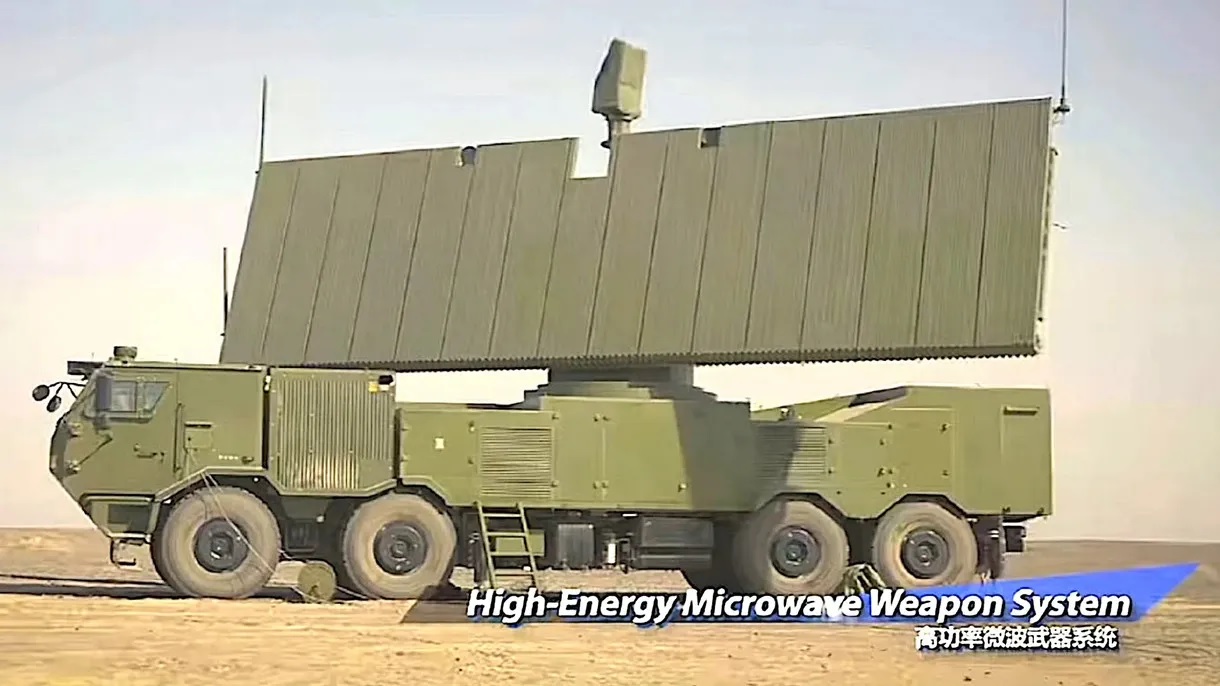China Develops 'HMP Weapon' Capable of Generating Nuclear-Level Electromagnetic Pulses

China is making significant strides in the development of a high-power microwave (HPM) weapon, which could unleash electromagnetic pulses (EMPs) similar to those from a nuclear explosion. This powerful new technology has been described as capable of disabling or destroying enemy electronics, including weapon systems, by generating intense electromagnetic waves. Researchers claim that the weapon is compact yet incredibly potent, although it is still in the laboratory testing phase and has not yet been deployed in the field.
Specifications and Capabilities
This HPM weapon employs advanced phased-array transmission technology, allowing for precise energy focus. The system generates electromagnetic pulses that can exceed one gigawatt of power, with rotating waves needing exact conversion to maintain stability across eight channels. The weapon's power divider, the size of a pedestal fan, produces electric field strengths greater than 80,000 volts per meter, mimicking the electromagnetic pulses from a nuclear blast. These specifications indicate that the weapon is capable of reaching immense power levels, with Chinese researchers claiming it can withstand thousands of nuclear-like blasts during testing.
The high-performance power divider developed by the research team has successfully endured over 5,000 full-power pulse emissions without degradation. The system maintained stable waveforms throughout its trials, with an operating efficiency of 96.6%. With a power threshold surpassing 1 gigawatt, the weapon meets military demands for high-power output and efficient transmission.

Military Impact and Applications
High-power microwave weapons, including HPM systems, are emerging as promising solutions in the military’s race to develop directed energy weapons. The growing threat from drones and other aerial targets has accelerated the need for cost-effective countermeasures. Unlike traditional weapons that require finite ammunition, HPM systems can fire indefinitely, offering a distinct advantage in prolonged engagements.
One of the unique features of HPM weapons is their non-lethal capability. These systems can disable enemy vehicles and drones without causing harm to personnel. This could have profound implications for modern warfare, allowing for more precise and humane engagements. Moreover, HPM weapons emit wide-area, cone-shaped beams that can target multiple threats simultaneously, unlike lasers that are limited to concentrated beams.
The military applications for HPM systems extend beyond drones. China is also exploring the potential to use these weapons against satellites in low Earth orbit. With the proliferation of commercial satellite networks like SpaceX’s Starlink, which has played a pivotal role in the Russia-Ukraine conflict, China views these satellites as vulnerable targets. Starlink’s reliance on large antennas and commercial-grade components makes it susceptible to high-energy strikes, such as those from HPM weapons.
In recent tests, China’s new weapon demonstrated its ability to emit Ku-band electromagnetic pulses—a frequency commonly used by communication satellites, including those of Starlink. Researchers suggest that many commercial satellites lack the military-grade reinforcement needed to withstand such attacks. As a result, China is accelerating the development of anti-satellite weapons designed specifically to disrupt these systems.
A Global Race for Directed Energy Weapons
The competition in directed energy weaponry is heating up, with both China and the United States investing heavily in technologies like HPM systems. The U.S. military has already deployed advanced systems such as the Helios laser weapon aboard the USS Preble, a guided-missile destroyer, in the Indo-Pacific region. This reflects the growing importance of these technologies in modern military strategy, especially in areas where conventional weapons are less effective against emerging threats like drones.
China’s development of HPM weapons has sparked concerns in the West, especially regarding its potential to disrupt critical infrastructure like communication networks, satellites, and unmanned aerial systems. Chinese scientists have even suggested that these weapons could be used to target multiple Starlink satellites, with simulations showing that a fleet of Chinese satellites could approach and neutralize over 1,400 Starlink satellites in a matter of hours.
Conclusion
China’s progress in developing high-power microwave weapons represents a significant leap in the realm of directed energy technologies. These weapons have the potential to change the landscape of modern warfare, offering capabilities to disable enemy electronics and satellite systems with devastating electromagnetic pulses. While still in the testing phase, the rapid development and successful trials of this technology indicate that it could soon become a major player in military operations, with implications for both terrestrial and space-based defense strategies.



